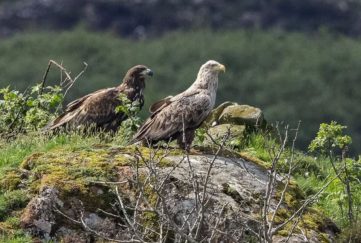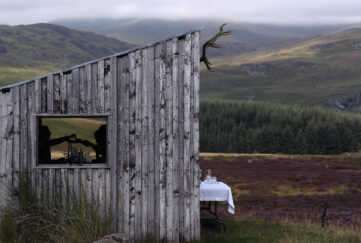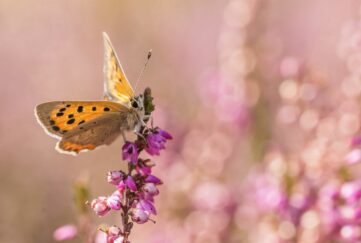Under The Oak Tree – Jim Crumley
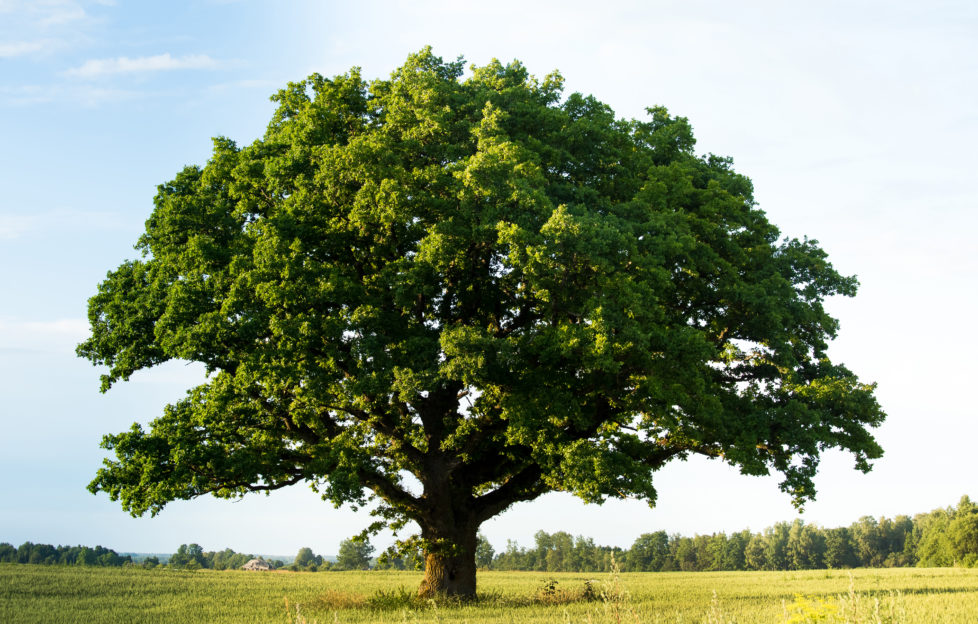
 Only by stopping and sitting still under an oak tree in a seemingly deserted wood can you see it come alive with all kinds of wonder…
Only by stopping and sitting still under an oak tree in a seemingly deserted wood can you see it come alive with all kinds of wonder…
The afternoon sunlight had a quality. Here and there it shone directly onto the trunks of the trees, or through the slowly-thinning canopies of hundreds of oaks and their sporadic underlings, the rowans and the hollies.
It lit long and ragged-edged strips of forest floor and grassy clearing, and fell on the darkest bark or the blackest roots. Wherever it shone, it struck notes of bright white, notes so vitally defined that I felt I might hear them.
At any moment, the oakwood might resound to the silvery voices of vibraphones or woody wind chimes, and every note would sustain and ripple and hang in the air in layers of tremolo echoes. Their pitch would change every time a sliver of breeze lifted a holly spray so its shadow shifted against an oak trunk, beginning new notes, silencing old ones.
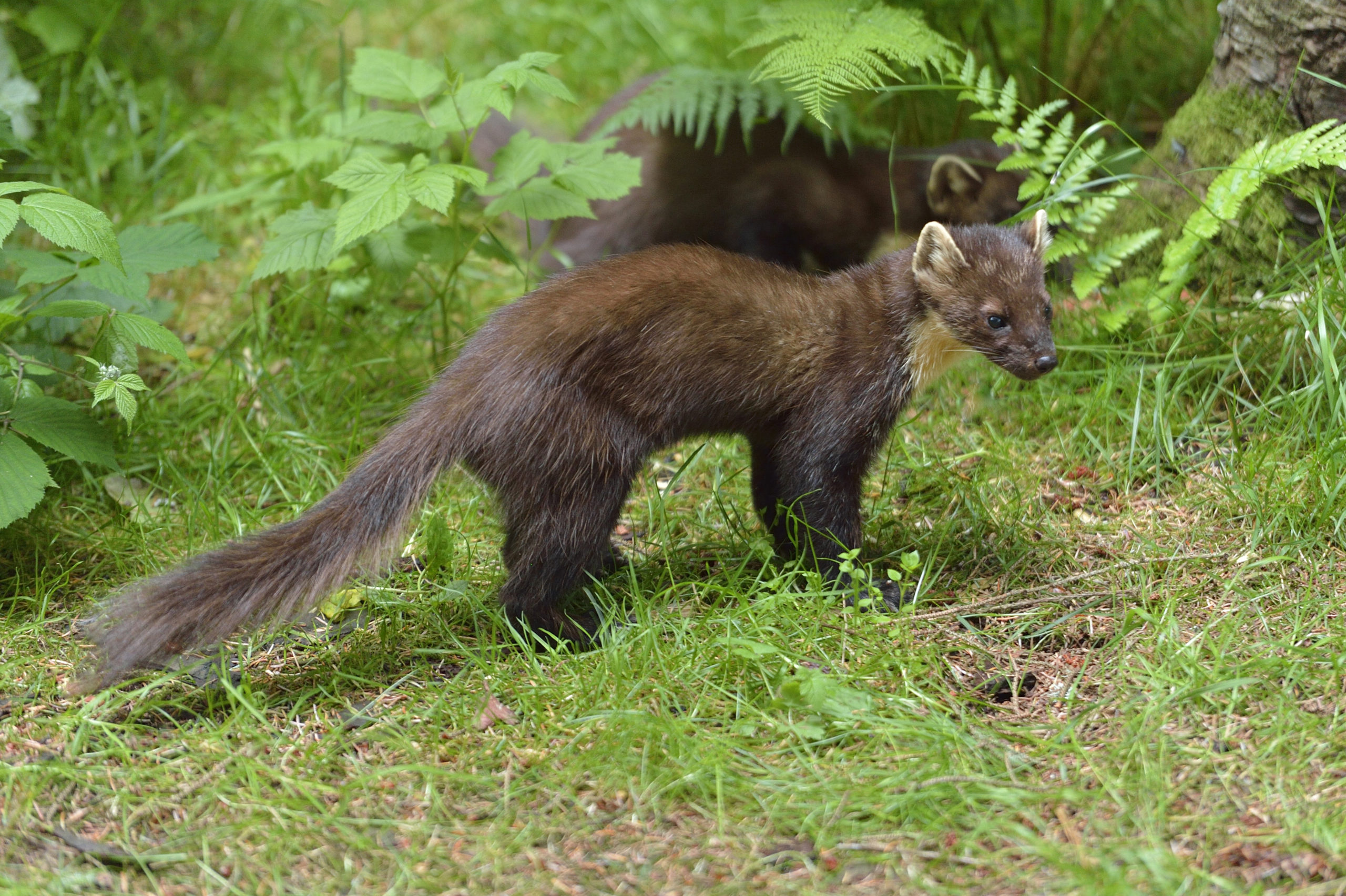
Pine martin. Credit: L.Campbell.
An animal trail half a yard wide creeps deeper into the oakwood. Its shapers include roe deer, red fox, red squirrel, badger and pine marten. Over the years, over different seasons, and in all the hours of day and night and half-light, I have seen them all there, or have seen the tell-tales of their passage just after or long after they had been and gone. It might look deserted, but that is an illusion. This trail is busy.
It winds between trunks, edges round clearings, and spawns off-shoots that skid down to the river – for all the wood’s mammals drink and most swim. I have known it for 30 or 40 years, but in that afternoon sunlight, it was as if I had never seen it before, as if I had stumbled across a new way of seeing.
Restless woods
There was the sunlit wood and the shadowed wood and one was bright white and the other a deep, dark ebony. Both were restless. The interweave of sunlight and wind achieved an image of ritualised dance.
As I was looking at this sunlit oakwood I was seeing in a kind of monochrome the essential elements that pinned it together and fastened it to its earth.
But then, by setting something free that I could not possibly name if I sat here and thought about it for a fortnight, I could allow in the canopy and the woodland floor – shades of fading green and paling yellow and darkening oak-leaf tans. All of that gathered around me in such a slow whirl of pin-sharp details that to write it down that way sounds dizzying. But its effect was the opposite.
I had slowed and slowed without thinking. Then I stopped and sat at the base of one broad and sunlit oak with my back to the trunk and my face to the sun.
I felt becalmed, at ease with the wood itself. And sometimes, that is how I go to work. If you take the trouble to win a degree of intimacy with your surroundings and your subject whenever that allows, then there will be moments when you see something “other” in the familiar.
An oak leaf fell on to the open page of my notebook. It was green and yellow and brown. I held it up to the light and I could see many small holes, each one haloed in sunlight. I put it back down on the page and photographed it. The result looked a bit like a satellite image of Lewis and Harris complete with their characteristic freckling of dubh-lochans.
From that moment, I have acquired the habit of looking at fallen autumn leaves as if they were islands. There is no accounting for the gifts that nature offers you when you choose to be still in its company and it treats you as part of the landscape.
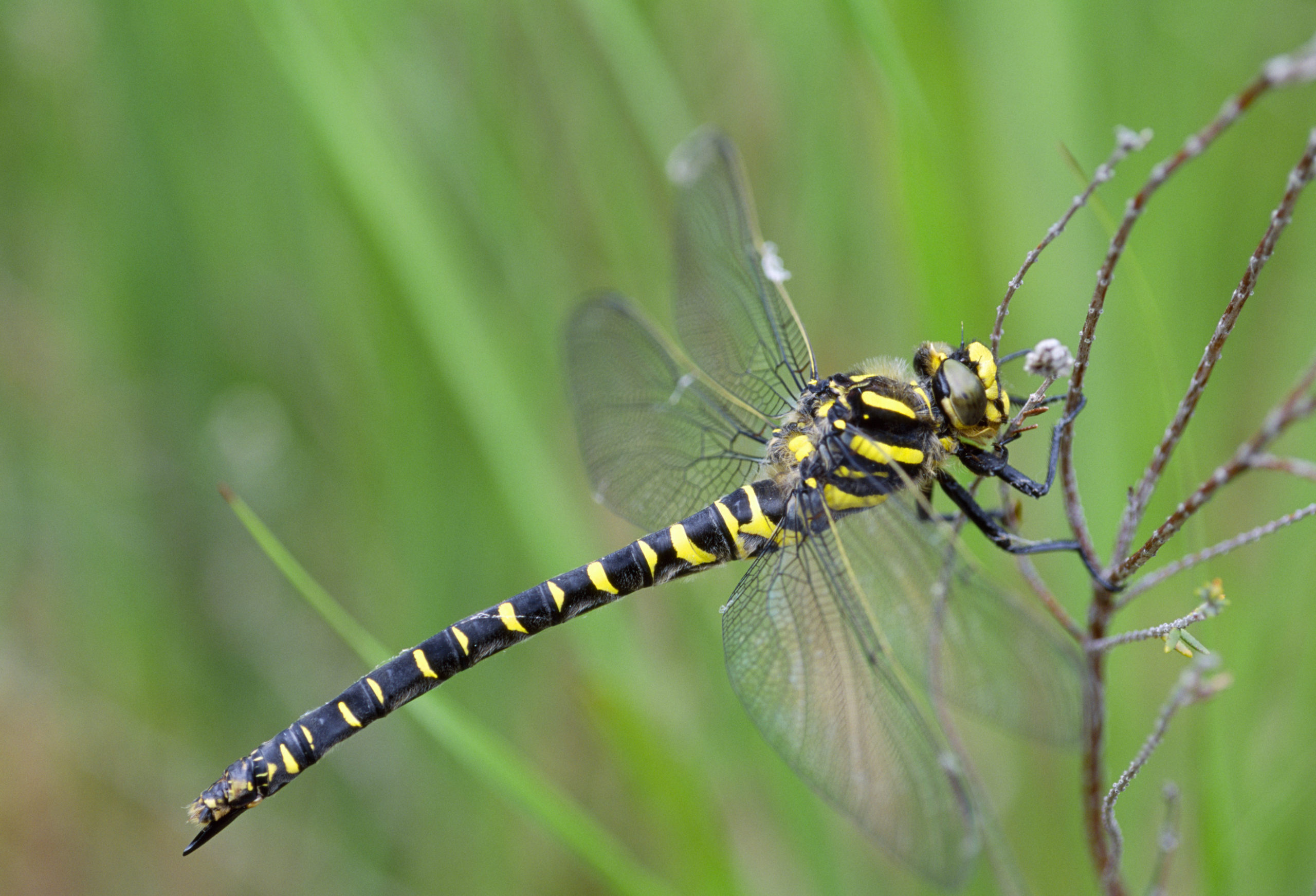
Dragonfly. Pic credit: L.Campbell
A variety of bugs!
When I am sitting outside writing, I am mostly still and silent. Over the years, all manner of things have inadvertently landed on or chosen to explore my open notebooks. Leaves are the most obvious, mostly oak, but also birch, rowan, willow, and larch needles and more robust bits of trees – acorns, pine cones, beech nuts, assorted catkins, twigs, and once a piece of pine bark loosened by a treecreeper above my head.
Bugs seem to be attracted to the glare of sunlight on the white page with the blue ink scribbles, especially butterflies. Once, I had just written the words “they have more to fear from us than we have from them” – it was something to do with wolves – and had laid the open notebook aside on the grass for a moment. A tortoiseshell butterfly landed on the page and its shadow fell over the two lines of handwriting, “embracing” it – or so I chose to interpret the moment.
Dragonflies have turned up to inspect my writing, too – especially at Flanders Moss west of Stirling which is something of a showpiece for dragonflies. Ladybirds, and a marching column of pinewood ants – too many for the comfort of a sitting writer – have walked across open pages, so too have spiders, bees, a burnet moth and, once, a robin.
Following the river…
Deep in the oakwood and down by the river, I encountered a broken runt of a tree I had never noticed before, but it caught my eye then because it was waving a crimson flag. In life it had been unexceptional as oak trees go, its girth was modest and it had forked at about seven feet high. What remained of the tree was the trunk, one limb hoisted from the fork at about 30 degrees, and a skinny, broken off branch where the rest must have been.
Much of the trunk was swaddled in thick moss, light and dark shades of green. But the scene-stealer was not of the tree, but rather a parasite. In the moss and deadwood on the top side of the broken fork, a small cluster of rosebay willowherb stems had rooted, prospered, and now flaunted a pretty show of autumn-crimsoned leaves, conferring on the entire oak remnant a jaunty, rakish air that made me smile. I stopped to sketch it. Moral: deadwood is the lifeblood of living woodland, whether standing or prone.
Nearby in the same wood, a much larger oak had succumbed to the previous winter’s storms. It fell sideways across the animal trail so that a new diversion navigated round the now vertically aligned mass of roots which clawed the air instead of the soil. But the tree declined to die completely.
For although, what had been its canopy was now smashed and bare, a row of around twenty oak saplings a few inches high had sprung vertically from the horizontal trunk, and these made a loose-knit hedge in shades of green and yellow and brown.
I was still about 20 yards away when a great spotted woodpecker materialised on the very topmost claw of the upended roots. From there it dropped nimbly down onto the trunk and began to thread a tricky path through the saplings with a confidence that suggested this was not the first time it had done so.
But then, at various moments, the components of its black and white and vivid red plumage appeared hesitantly through gaps in that inches-high screen of leaves, often revealing nothing more than the bird’s head with its black crown, red nape and white cheeks. Other glimpses showed a bird apparently on tiptoe and craning its neck to see over the leaves.
Once, in a bare patch of horizontal bark, it appeared to be discomfited. It stretched its entire body into a low-slung and elongated parody of a woodpecker’s normally upright posture, and proceeded in tiny steps of its huge feet as if horizontal progress were an ordeal, and not a manoeuvre to be undertaken lightly.
Retracing the woodpecker’s steps
At the far end of the woodpecker’s unlikely approach to a tree, it surprised me again by turning in its own length and retracing its steps.
The point of the enterprise now became clearer, as it took a more open route past the saplings so I could see it pause every few steps and find food there. So not only was that fallen oak tree determinedly fostering new oak life for as long as it could, but it also teemed with invertebrate life.
The woodpecker, which I imagine must know more about the life cycle of oak trees than anything else on the face of the earth was not about to miss out on such bounties, even if it meant improvising a new hunting technique, reinventing the ancient relationship between bird and tree.
There again, now that I think about it, storms have been felling oak trees forever, too, and perhaps all that was required of that particular woodpecker was to tap into the race memory of thousands – millions – of generations of woodpeckers whenever and wherever they had contemplated a felled oak.
There are three things this nature writer gleaned from the oak woodland day.
One: in dying as in life, there is no more endlessly resourceful living organism than an oak tree.
Two: no matter how familiar you and I might be with a creature and its everyday habitat, like a great-spotted woodpecker and an oakwood, it’s worth bearing in
mind that no two days in their company are the same.
Sometimes they will take your breath away if you happen to be in the right place at the right time and paying attention.
Three: the best way to come close to nature is to go for a quiet walk where animals are accustomed to walk and flowers to bloom and everything else in nature is at work. And then you sit down somewhere, grow still, and let it come to you.
And while you wait for the magic moments to turn up, you might notice that the autumn afternoon sunlight has a quality.
You can read more of Jim Crumley’s Scottish wildlife columns online here, and each month in The Scots Magazine.
Subscribe to The Scots Magazine today for more from Jim Crumley >>



